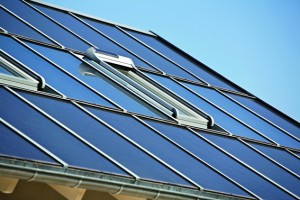
We got the lowdown on the HERO program; here is more on solar leases:
http://journal.firsttuesday.us/solar-woes-loom-for-homeowners-as-tax-credits-sizzle-away/51248/
An excerpt:
Net metering is an agreement between the utility company and the residential or commercial customer. The property owner who generates excess solar energy can sell it back to the utility company for credit to be used later. Solar panels often produce more energy than the home needs during the sunny months. In the winter when cloud cover obscures more of the panels, owners’ net metering credits can be used to pay down their winter utility bills.
When net metering is not an option, property owners are less likely to be interested in buying or leasing a solar system, as this instinctual savings incentive is lost.
The good news for solar in California: net metering continues, and SolarCity is optimistic about potential for even more tax credit growth in the state.
Going solar requires long-term planning. On average, it takes a homeowner 20 years to pay off the full cost of a solar system. Leasing solar panels eliminates the investment, but it still requires a similar, lengthy commitment.
What happens if the homeowner sells before the 20 years are up? There are three options:
- The seller may transfer the solar lease to their new home if it is in the same territory, for a cost.
- The seller may purchase the solar panels outright and include the cost in the home’s sale price, if they find a willing buyer.
- The buyer may assume the solar lease.
Since the solar lease is a contract, interested homeowners may be concerned that signing a solar lease will place a lien on the property. However, the lien is on the solar fixture — not the property. Therefore, if the homeowner stops paying for solar service, the leasing company’s sole recourse is to reclaim the solar system, not foreclose on the property.
On the other hand, taking out a mortgage to pay for the purchase of a solar system does create an additional lien on the property.
Another reason long-term planning is necessary before signing a solar agreement is the possibility of roof maintenance. That is, if the homeowner’s roof needs repairing, they will need to pay to have the panels moved before work can begin on the roof. Therefore, installing panels on a roof that will need maintenance in a few years is not wise.
However, the long-term investment does pay off, though it can take several years. The energy savings can be significant, especially for Southern California homeowners who receive the most sun. The average solar lease savings after the cost of renting the solar panels is a 15% reduction on monthly utility costs. Purchasing solar panels may provide bigger savings, but they won’t be realized until the system is paid off.
Read more about the details of solar leases here.
Read about prepaid solar leases here.
For a critical list of issues homeowners are to consider before signing a solar lease, click here.




Actually with the savings of the panels it might make sense to go with a metal roof or at a minimum a new roof before doing the panels. That could defer the need for serious roof work for 20-30 if new shingles are involved or over 50 if a metal roof is involved. Of course in San Diego a metal roof also makes the house more resistant to wildfire spread, whereas in other parts of the country it is hail as well.
Our solar investment should zero out in 8 years not 20.
I wonder where do they get 20 from, and what their motives are.
Meanwhile, it’s nice not having any electric bill, even with an electric/hybrid vehicle.
And future buyers should like our “$0”.